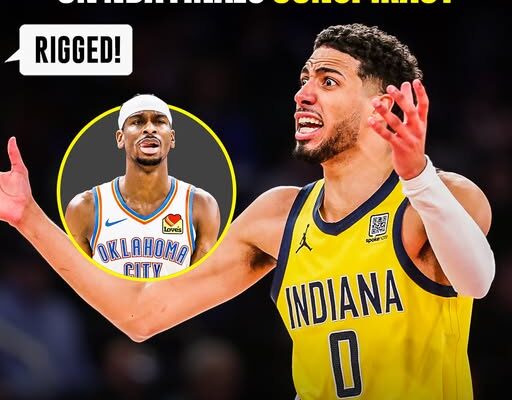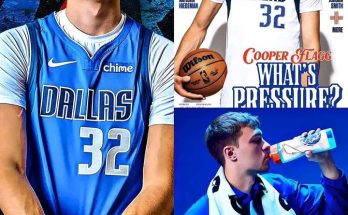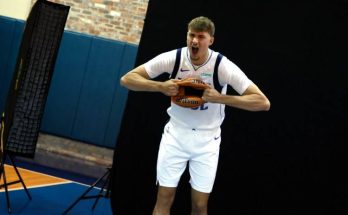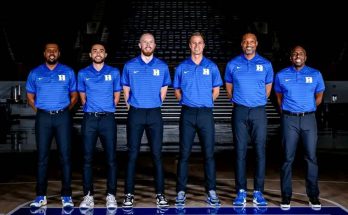In the aftermath of the 2025 NBA Finals between the Indiana Pacers and the Oklahoma City Thunder, few storylines have dominated the conversation more than the conspiracy theories swirling around the series. While the basketball world should have been focused on what was one of the most exciting Finals matchups in recent memory, the series quickly became clouded by speculation, accusations, and narratives fueled by fans, media figures, and even some insiders. At the center of it all, Pacers star point guard Tyrese Haliburton, one of the most outspoken and charismatic young leaders in the NBA, decided not to shy away from the chatter. Instead, he leaned into the discussion, offering his own perspective on the controversies and giving fans a glimpse into how players process the noise when the stakes are at their highest.
The Pacers’ run to the Finals was, in itself, a remarkable story. After years of being pegged as a middle-of-the-pack team in the Eastern Conference, Indiana had finally broken through under head coach Rick Carlisle. Powered by Haliburton’s playmaking brilliance, a deep supporting cast, and a balance of young energy with veteran toughness, the Pacers made it all the way to the league’s biggest stage. Their opponent, the Oklahoma City Thunder, were no less a Cinderella tale, though their rise had been building for years. Shai Gilgeous-Alexander had emerged as a bona fide superstar, Chet Holmgren had become a defensive force, and the Thunder’s core of young talent had matured right on schedule. It was a dream matchup for the league—a clash of two franchises built on youth, chemistry, and the promise of the NBA’s future.
But instead of celebrating the basketball on display, much of the post-Finals discourse became consumed with theories that the outcome was predetermined or influenced by forces outside the players’ control. Some fans argued that the league wanted to “anoint” Shai Gilgeous-Alexander as the face of the NBA, framing the Thunder’s victory as more of a business decision than a basketball one. Others pointed to officiating decisions, suggesting that referees tilted the balance at key moments in favor of Oklahoma City. Even more far-reaching conspiracies tied the Finals to television ratings, Nike contracts, and the NBA’s international growth strategy.
Haliburton, who has always been candid with media and fans, addressed the growing storm during a long-form interview after the Finals had concluded. Rather than dismiss the theories outright, he acknowledged them, dissected them, and, in his own words, “tried to separate the truth from the noise.” He began by pointing out that any high-stakes sporting event will inevitably attract conspiracy theories. Fans invest their emotions, money, and time into their teams, and when outcomes don’t go their way, it’s human nature to search for explanations beyond “our team got outplayed.” In Haliburton’s view, the Finals controversy wasn’t unique; it was simply magnified because of the growing platforms of social media and the NBA’s cultural prominence.
However, Haliburton didn’t stop at generalities. He tackled specific claims head-on, including the idea that referees had systematically favored the Thunder throughout the series. While acknowledging that officiating had its inconsistencies—something he said every player accepts as part of the game—he pushed back on the notion of deliberate bias. “Look, referees are human beings,” he said. “They miss calls, sometimes they blow the whistle too quick, sometimes they let too much go. That’s been part of basketball since the beginning. But to think they’re sitting there saying, ‘We’re going to make sure OKC wins this game’? That’s not reality. What people don’t see is refs are under just as much pressure as us. They’re graded, they’re reviewed, they know every call they make is going to be picked apart on national TV.”
Haliburton also addressed the narrative that the NBA had ulterior motives to crown Gilgeous-Alexander as the face of the league. While praising SGA as “one of the best players in the world and a great dude,” he questioned the logic behind that theory. “If you really think about it, the NBA wins no matter what,” Haliburton said. “If the Thunder win, it’s the story of young guys taking over. If we win, it’s the Pacers breaking through, it’s the Midwest, it’s a new market getting its shine. Either way, the league benefits. The idea that they’re sitting in an office deciding who gets the ring—that’s just people looking for control where there isn’t any.”
Still, Haliburton admitted that players are not immune to the chatter. He revealed that throughout the Finals, Pacers players saw the memes, heard the radio segments, and even had friends and family ask them if they thought “the fix was in.” While most players laughed it off, Haliburton admitted that it could be frustrating at times because it undermined the years of work, sacrifice, and preparation that go into reaching that stage. “When you hear people say it’s rigged, it’s like, man, do you know how hard we worked? Do you know the hours we put in to get here? To reduce all that to some conspiracy is kind of disrespectful,” he said.
That frustration, though, didn’t stop Haliburton from engaging with the conversation in a thoughtful way. He explained that conspiracy theories, while often exaggerated, are also a reflection of how much fans care about the game. In his words, “If nobody cared, there wouldn’t be any conspiracies. The fact that people are making YouTube videos, writing threads, analyzing every frame of a call—that shows how passionate they are. And at the end of the day, that passion is why we get to do what we do.”
Beyond referees and league motives, Haliburton also touched on one of the stranger theories that emerged during the Finals: the idea that shoe companies had a hand in shaping the outcome. Because the Finals featured stars endorsed by competing brands—Haliburton himself being a Nike athlete, and some Pacers teammates signed with Adidas—fans speculated that sneaker deals and marketing strategies could influence the narrative. Haliburton laughed at the notion but didn’t completely dismiss the influence of corporate power in the NBA. “Do shoe companies have a huge impact on the game? Of course. They sponsor camps, they back players, they shape culture. But the idea that they’re making calls to refs to decide who wins the Finals—that’s wild. At the same time, I get why people think like that, because everyone knows money drives everything in sports. It’s just not as direct as people imagine.”
Haliburton’s willingness to speak openly about these issues added fuel to an already fiery conversation, but it also highlighted why he has become one of the NBA’s most respected voices. Unlike many athletes who shy away from controversy, he has embraced the role of being a bridge between players and fans, someone willing to explain the player’s perspective without sugarcoating reality. He acknowledged that fans’ distrust of institutions—whether it’s referees, leagues, or corporations—doesn’t exist in a vacuum. In a broader cultural context where conspiracy theories thrive in politics, media, and entertainment, it’s no surprise that sports aren’t immune.
As for the basketball itself, Haliburton gave credit where credit was due. He admitted that the Thunder outplayed the Pacers at key moments and that Shai Gilgeous-Alexander elevated his game to a level that made the difference in the series. While he expressed disappointment in not bringing a championship to Indiana, he rejected the idea that the Pacers lost because of forces outside their control. “We had our chances. We didn’t take advantage of them the way we needed to. That’s basketball. Sometimes the other team is just better in the moment. And if you can’t accept that, you’re going to drive yourself crazy looking for excuses,” he said.
What makes Haliburton’s perspective especially important is that he represents a new generation of NBA stars—media-savvy, thoughtful, and unafraid to engage with controversial topics. The 2025 Finals will likely be remembered as much for the conspiracy theories as for the games themselves, but Haliburton’s voice provided a counterweight to the noise. By addressing the theories instead of dismissing them, he demonstrated that players are aware of the narratives swirling around them, but also that they remain grounded in the reality of competition.
Looking forward, Haliburton expressed confidence that the Pacers would be back in contention. He emphasized the growth of his teammates, the culture the team had built, and his own hunger to win a championship. If anything, he suggested, the controversies surrounding the Finals could serve as motivation. “People can say what they want about this year. But next time, I want to make it so clear that nobody can question it. That’s the goal,” he said.
In the end, the conspiracy theories around the 2025 NBA Finals may never fully go away. They are part of the mythology of sports, woven into the narratives that fans create to make sense of heartbreak and triumph. But Tyrese Haliburton’s response reminds us that behind every theory are real players, putting in real work, and playing the game at the highest level. His perspective doesn’t silence the noise, but it reframes it, turning the conversation from accusations into a deeper exploration of what it means to care so passionately about sports. For Haliburton and the Pacers, the story of the Finals may be unfinished, but their star point guard has already shown that he’s ready to lead both on and off the court, even when the spotlight shines brightest and the rumors are loudest.



